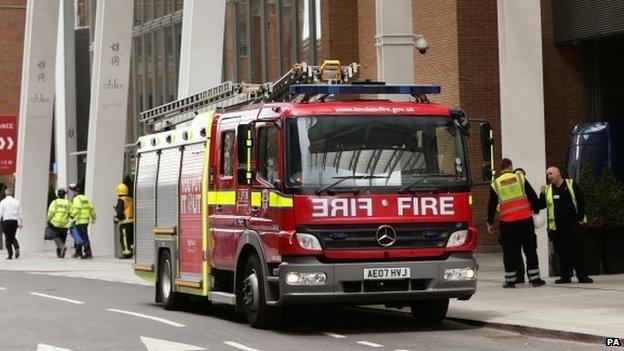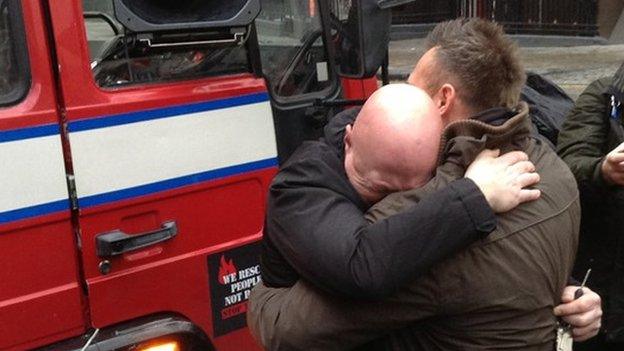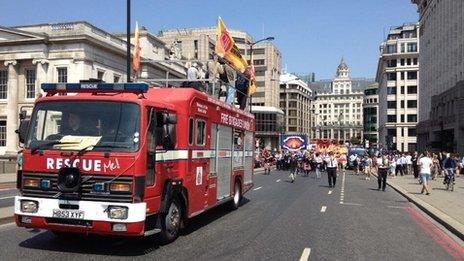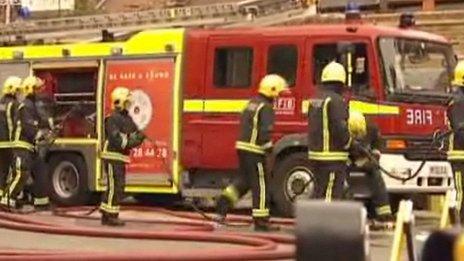London Fire Brigade response times increase across capital
- Published

Ten fire stations have been closed in London since the start of the year
Fire brigade response times have increased in more than half of London's wards, figures have revealed.
London Fire Brigade (LFB) has to respond within six minutes and said its response times were "on target".
But Labour's London Assembly members said 371 of London's 649 wards had seen response times increase between January and August compared with last year.
The average response times went up by 12 seconds while 37 wards saw increases of more than a minute.
Labour Assembly Member Fiona Twycross said: "Fires can take hold in seconds, that's why any increase in response times can be so dangerous.
"As a result of Mayor Boris Johnson's decision to close 10 fire stations and with the removal of a further 13 fire engines... we have seen response times rise in over half of the capital's wards."
The biggest increase was in the Royal Docks ward in Newham which saw first response times increase from five minutes and eight seconds to seven minutes and 56 seconds - an increase of two minutes and 48 seconds.
But LFB said the results had come in as they had predicted.
"We are still within our London-wide targets to get a first fire engine to an incident in six minutes and a second in eight minutes, on average," the brigade said.
"In many wards where response [times] have increased, they have done so by less than 15 seconds."
The research found that 214 wards, on average, had to wait more than the expected six minutes.
Earlier in the year fire stations were closed in Belsize, Bow, Clerkenwell, Downham, Kingsland, Knightsbridge, Silvertown, Southwark, Westminster and Woolwich to save LFB £28.8m. The changes included the loss of 552 firefighters and 14 fire engines.
London now has 102 fire stations and 155 fire engines.
- Published9 January 2014

- Published9 January 2014

- Published20 December 2013

- Published12 September 2013

- Published10 August 2013

- Published5 August 2013

- Published24 July 2013

- Published18 July 2013
